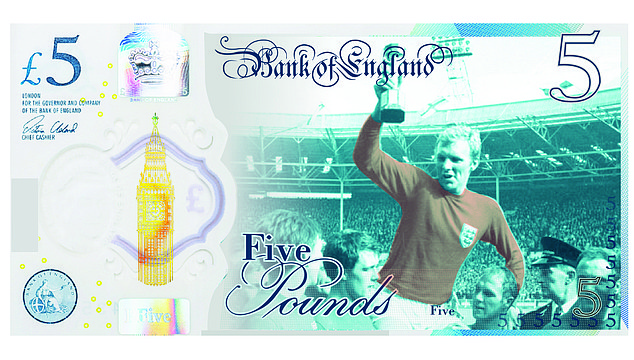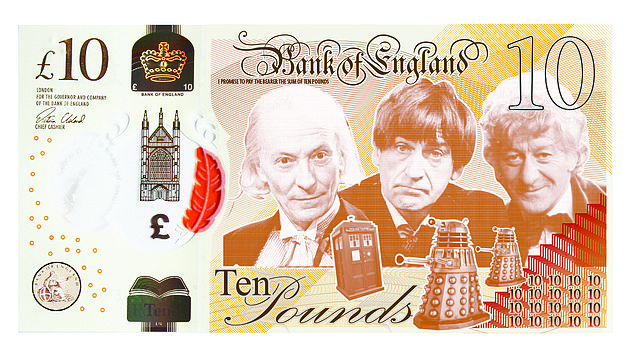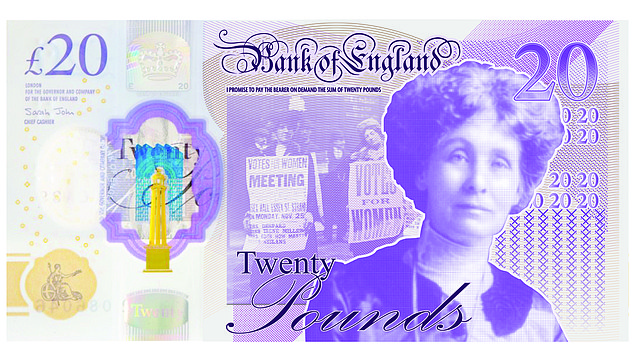By A.N. WILSON
When you have been abroad and change your currency back into sterling, is it not reassuring to see that great painter JMW Turner looking out at you from the £20 note? Doesn’t the humble fiver – with Churchill on one side and the late Queen or, increasingly, the King overleaf – tell you that you’re home?
As the Bank of England‘s chief cashier, Victoria Cleland, says: ‘Banknotes are more than just an important means of payment – they serve as a symbolic representation of our national identity and an opportunity to celebrate the UK.’
Why then, having lovingly created a suite of designs in recent years that evokes a Britishness all of us are content with – from Churchill on the £5, Jane Austen on the £10, Turner on the £20 and wartime code breaker and computing genius Alan Turing on the £50 – does the Bank now want to risk it all in the pursuit of the dreaded D-word: diversity?
From today, the Bank invites the public to suggest artwork and figures to adorn the next tranche of notes. We have a month in which to submit our ideas to the Bank’s website – and Ms Cleland is anxious to make her own priorities clear when she urges us to think about ‘the great diversity in the UK’.
‘It may be we can get real diversity through a different theme than historic figures,’ she trills.
Well, this is a classic case of ‘if it ain’t bust, don’t fix it’.

Bobby Moore holding aloft the World Cup trophy in 1966 could feature on £5 notes, as our mock-up shows

A possible £10 featuring Doctor Whos from the past as well as Daleks and the Tardis
Yes, the choice of figures on banknotes has long been rather boring. Civil engineer George Stephenson and his Rocket locomotive, for instance, were stalwarts of the fiver in the Nineties, while the great 17th century architect, Sir Christopher Wren, graced the £50 note from 1981 to 1994.
But surely only such titanic figures from our past are suitable for something as vital and familiar as our currency. Ms Cleland is right: banknotes are not just a means of exchange. They are an expression of who ‘we’ are.
And while diversity is undeniably a feature of modern Britain, now the risk is introducing notes that make a controversial or political point, or which might put some people’s backs up for championing a special-interest group.
The chief cashier is wrong, then, if she thinks that throwing out this opportunity to the public will necessarily improve the notes. The world is teeming with discontented minorities who still believe they lack a ‘voice’ – despite how loudly they clamour on social media.
I, for example, would love to see Captain James Cook on the banknotes: the first man to map New Zealand and the eastern coast of Australia and who met his untimely end by being murdered by furious natives in Hawaii. But these days, of course, Cook is seen for all his brilliance as a monstrous coloniser – and the sad truth is that his presence on the notes would offend large numbers of people.
In that context, a moment’s consideration should show us that the chief cashier has fallen into a massive trap. She is not about to be bombarded with suggestions of great and under-recognised figures from our past. Instead, the Bank’s online submissions page is now destined to become a magnet for lobbyists for every cause. And because Ms Cleland is probably a nice person, with the instinctual British hunch that maybe she’s in the wrong, these lobbies will start making her feel guilty.

Emmeline Pankhurst, who organised the British suffragette movement for women’s right to vote, on a potential £20 note
Isn’t it a disgrace, they will ask her, that there are no disabled people on the £10 notes? Well, no. But as soon as you say that, you sound as if you do not care about the plight of the disabled.
Is the Bank Islamophobic? Before you have time to insist it isn’t, people will be asking why there is no Islamic calligraphy on the currency; never mind that, until a few years ago, Muslims comprised a minuscule proportion of the country.
Meanwhile, the estates of dead rock musicians – with one eye on back-catalogue royalties – will be equally hard at work, getting bloc votes for their man. The chief cashier, as well as going to bed at night wondering if she is an Islamophobe with a hitherto unrecognised prejudice against people in wheelchairs, will also realise she’s a fuddy-duddy who does not have the courage to put Sid Vicious of the Sex Pistols alongside the King on the note – and I don’t mean Elvis.
Why are there no trans people on banknotes, either?
Before she has racked her brains for an answer to that one, along will come the republicans asking for the King’s head to be replaced by Oliver Cromwell himself. (Mind you don’t cause offence to the Irish though, given how many of their citizens were massacred by the Lord Protector. The rap group Kneecap would have a field day.) The whole business will instantly become a moral maze of competing claims.
The trouble with free votes is that they aren’t really free – they are lobbying in disguise.
Opening the floor to the public is fine for Strictly Come Dancing and Eurovision, but as a means for deciding the design of something as boring, everyday and – well, yes, serious – as the British banknote, it is simply moronic.











